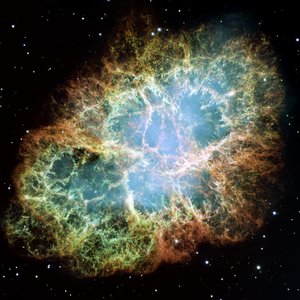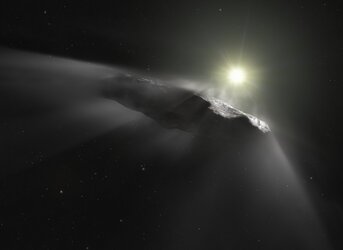Accept all cookies Accept only essential cookies See our Cookie Notice

About ESA
The European Space Agency (ESA) is Europe’s gateway to space. Its mission is to shape the development of Europe’s space capability and ensure that investment in space continues to deliver benefits to the citizens of Europe and the world.
Highlights
ESA - United space in Europe
This is ESA ESA facts Member States & Cooperating States Funding Director General Top management For Member State Delegations European vision European Space Policy ESA & EU Space Councils Responsibility & Sustainability Annual Report Calendar of meetings Corporate newsEstablishments & sites
ESA Headquarters ESA ESTEC ESA ESOC ESA ESRIN ESA EAC ESA ESAC Europe's Spaceport ESA ESEC ESA ECSAT Brussels Office Washington OfficeWorking with ESA
Business with ESA ESA Commercialisation Gateway Law at ESA Careers Cyber resilience at ESA IT at ESA Newsroom Partnerships Merchandising Licence Education Open Space Innovation Platform Integrity and Reporting Administrative Tribunal Health and SafetyMore about ESA
History ESA Historical Archives Exhibitions Publications Art & Culture ESA Merchandise Kids Diversity ESA Brand Centre ESA ChampionsLatest
Space in Member States
Find out more about space activities in our 23 Member States, and understand how ESA works together with their national agencies, institutions and organisations.
Science & Exploration
Exploring our Solar System and unlocking the secrets of the Universe
Go to topicAstronauts
Missions
Juice Euclid Webb Solar Orbiter BepiColombo Gaia ExoMars Cheops Exoplanet missions More missionsActivities
International Space Station Orion service module Gateway Concordia Caves & Pangaea BenefitsLatest
Space Safety
Protecting life and infrastructure on Earth and in orbit
Go to topicAsteroids
Asteroids and Planetary Defence Asteroid danger explained Flyeye telescope: asteroid detection Hera mission: asteroid deflection Near-Earth Object Coordination CentreSpace junk
About space debris Space debris by the numbers Space Environment Report In space refuelling, refurbishing and removingSafety from space
Clean Space ecodesign Zero Debris Technologies Space for Earth Supporting Sustainable DevelopmentLatest
Applications
Using space to benefit citizens and meet future challenges on Earth
Go to topicObserving the Earth
Observing the Earth Future EO Copernicus Meteorology Space for our climate Satellite missionsCommercialisation
ESA Commercialisation Gateway Open Space Innovation Platform Business Incubation ESA Space SolutionsLatest
Enabling & Support
Making space accessible and developing the technologies for the future
Go to topicBuilding missions
Space Engineering and Technology Test centre Laboratories Concurrent Design Facility Preparing for the future Shaping the Future Discovery and Preparation Advanced Concepts TeamSpace transportation
Space Transportation Ariane Vega Space Rider Future space transportation Boost! Europe's Spaceport Launches from Europe's Spaceport from 2012Latest

Reflection nebula NGC 1999
Thank you for liking
You have already liked this page, you can only like it once!
This spooky sight, imaged by the NASA/ESA Hubble Space Telescope, resembles fog lit by a streetlamp swirling around a curiously shaped hole – and there is some truth in that. While the ‘fog’ is dust and gas lit up by the star, the ‘hole’ really is an empty patch of sky.
When the dark patch was first imaged, it was assumed to be a very cold, dense cloud of gas and dust, so thick as to be totally opaque in visible light, and blocking all light behind it. In general, such globules are known to be small cocoons of forming stars, but thanks to ESA’s Herschel Space Observatory, which would have been able to see any hints of star formation at infrared wavelengths but did not, along with ground-based observations, it turned out to be a truly empty patch of sky.
Astronomers think that is was formed when jets of gas from some of the young stars in the wider region punctured the sheet of dust and gas that forms the surrounding nebula. The powerful radiation from a nearby mature star may also have helped to clear the hole.
The bright star seen here is V380 Orionis, a young star 3.5 times the mass of our own Sun. It appears white owing to its high surface temperature of about 10 000ºC – nearly twice that of the Sun. The star is so young that it is still surrounded by a cloud of material left over from its formation. This bright material in the area pictured here is only visible because of the light from the star; it does not emit any visible light of its own. This is the signature of a ‘reflection nebula’ – this one is known as NGC 1999.
This image was first published on the Hubble site in March 2000. The Herschel discovery was made in 2010.
-
CREDIT
NASA and The Hubble Heritage Team (STScI) -
LICENCE
ESA Standard Licence

Cosmic Keyhole

A ghost in the Pleiades

Giant mosaic of the Crab Nebula made of Hubble images

Hubble watches light echo from mysterious erupting s…















 Germany
Germany
 Austria
Austria
 Belgium
Belgium
 Denmark
Denmark
 Spain
Spain
 Estonia
Estonia
 Finland
Finland
 France
France
 Greece
Greece
 Hungary
Hungary
 Ireland
Ireland
 Italy
Italy
 Luxembourg
Luxembourg
 Norway
Norway
 The Netherlands
The Netherlands
 Poland
Poland
 Portugal
Portugal
 Czechia
Czechia
 Romania
Romania
 United Kingdom
United Kingdom
 Slovenia
Slovenia
 Sweden
Sweden
 Switzerland
Switzerland
























